1. The Nightmare Before Christmas is based on a poem Tim Burton wrote in 1982 while working at Disney, who had purchased the film rights but felt it was too weird. Years later (after being fired from Disney), Tim realized they still owed the rights and convinced Disney to greenlight the movie.

Even though the film’s title is Tim Burton’s The Nightmare Before Christmas, he did not actually direct the movie. He was busy with Batman Returns at the time. So, he handed over the hefty responsibility of directing this famous, stop-motion movie to his old Disney Animation colleague Henry Selick. Selick made his feature, directorial debut here.
Burton’s name goes above the title for serving as producer, creating the story, and coming up with the look and the characters for The Nightmare Before Christmas.(source)
2. Disney found the movie “too scary” for kids to be released under the Disney Animated Features banner.

Because of the dark and deeply weird nature of the movie, Walt Disney Studios decided it was too off-brand to be released under the Disney Animated Features banner. The movie is filled with creatures that Disney deemed too scary for kids – characters that take off their own heads and limbs. There are also skeletons, nasty toys, and a creepy villain named Oogie Boogie. So, the film was made through their sub-division Touchstone Pictures.(source)
3. It took one week for the producers to shoot one minute of the movie. Overall, the movie, which is of 70 minutes, took three whole years to be produced.

The movie is based on a concept known as “claymation.” It utilizes stop-motion animation. This means that rather than filming moving objects, the crew first move the figures and sets little by little taking still photographs. They then finally play them back in rapid succession to simulate movement.
Even though claymation is recorded at 12 frames per second and shown at 24 frames per second, for The Nightmare Before Christmas, the scenes were filmed at 24 frames per second. This means that they had to change the pose of the character 24 times for each second of the actual, completed film. They worked with storyboards where they first laid out the entire scene and made refinements before the time-consuming process of animation was started.
One minute of the movie took about a week to shoot, and The Nightmare Before Christmas took three years to complete.(1,2)
4. Originally, the voice for Santa Clause was to be played by Vincent Price. But before he could record his lines, his wife passed away. The director felt that Price’s sadness could be heard in his voice and felt him unfit to portray the joyous Santa.
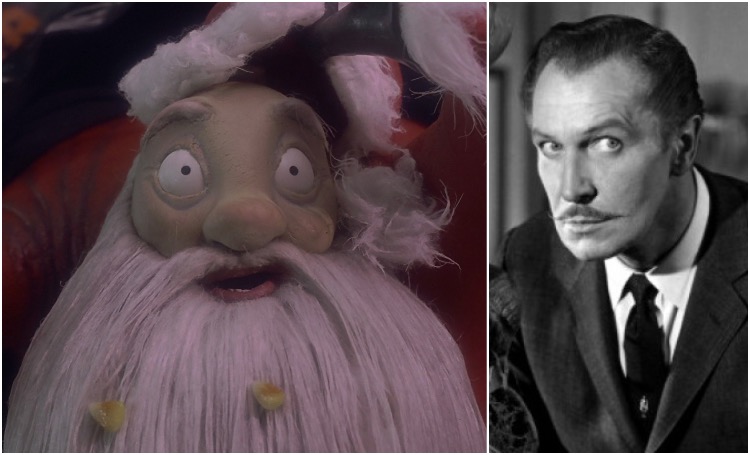
In an interview with The Daily Beast, Henry Selick, the director, said the following about Vincent Price, “We recorded him, and he would’ve done the introduction to the film, since it’s supposed to be Santa Claus’s voice at the beginning/end, but [Price] had just lost his wife, and he was despondent, and it just didn’t work. He was the first choice, that didn’t work out, and we met with Don Ameche, who was insanely grouchy. I couldn’t believe how grouchy he was. Then we met with James Earl Jones, and Danny had a weird moment where he went up to him and said he’d written the part especially for James Earl Jones, and James Earl Jones got very angry and yelled, ‘You don’t know me!’ It was a very tough voice to cast, and we just went with a local actor from San Francisco [Ed Ivory].” (source)
5. Danny Elfman is actually the singing voice for Jack Skellington. He is responsible for the Simpsons theme, the scores for Pee-Wee’s Big Adventure, Batman (1989), and Justice League.

In 1985, Elfman was approached by Tim Burton and Paul Reubens to write the score for their first feature film, Pee-wee’s Big Adventure. Elfman went on to score all but three of Burton’s major studio releases: Ed Wood, Sweeney Todd, and Miss Peregrine’s Home for Peculiar Children.
His other remarkable works include the Simpsons theme, the opening theme for the Sam Raimi Spider-Man series, the composition of the film score for Oz the Great and Powerful, and additional music for Avengers: Age of Ultron, score for Fifty Shades Darker, and the recently released Justice League. (source)
6. The most difficult shot in the entire movie was when Jack Skellington is reaching for the doorknob to Christmas Land. It required a perfect reflection of the forest behind Jack for the shot to work.

The filmmakers were very dedicated and wanted the scenes to be as alive as if shooting a live-action movie. This led to one shot proving to be especially challenging. When Jack discovers the part of the forest with pathways to other holiday worlds, he looks longingly at the Christmas tree door. A close-up of its shiny golden knob reflects this mournful skeleton as well as the trees behind him as he advances to open it. Getting the reflection just right took a great deal of time, care, and attention.(source)
7. Two different people voiced the character Jack Skellington, the “Pumpkin King” of Halloween Town.
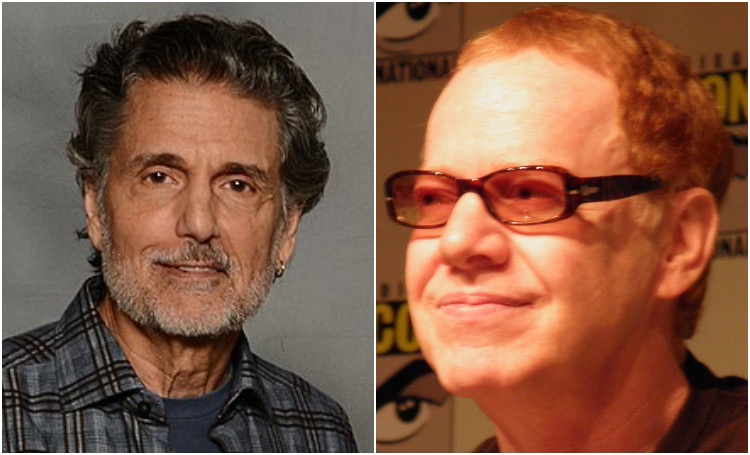
Chris Sarandon was the speaking voice, whereas Danny Elfman was the singing voice of Jack Skellington, a skeleton known as the “Pumpkin King” of Halloween Town. He owns a ghost dog named Zero who has a small, glowing, jack-o’-lantern nose. Danny Elfman also voices Barrel, one of the trick-or-treaters working for Oogie Boogie.
Elfman was initially cast as Jack’s singing voice and, after the songs were recorded, Sarandon was cast to match Elfman’s vocal style. The director felt that Sarandon’s speaking voice complimented Elfman’s singing voice.(source)
8. The top stop-motion animators in the world worked simultaneously on 20 miniature sets, managing to complete about 70 seconds of the film per week.
There were around 120 people working at the same time for the production of this movie. It included animators, puppet and prop-makers, set builders, art directors, camera operators, lighting designers, and editors.
There were 20 stages going at once and as many as 15 animators working simultaneously. When one animator was working with Jack climbing a tower, another was working with Jack walking through the forest, and another was working with Jack singing through the streets.(source)
9. Each puppet had an armature inside it enabling flexible movement.

The sculpture department sculpted the characters from the drawings that they got from the art department. They sculpted them in oil-based clay. Oil-based clay is very versatile and can be smoothed out with alcohol.
Moreover, each puppet had an armature inside it which is basically a ball and socket. This enabled the animators to move the puppets into specific postures during the shoot. All the intricate parts of the armatures were hand-machined to fit perfectly for each puppet. This ensured that each tiny movement looked smooth and fluid when posed 24 different times for each second of film.
The movie had more than 60 individual characters, and three or four duplicates were made for each of them. So, the total number of puppets was closer to 200.(source)
10. Jack Skellington had 400 different heads that are replaced each time he changes expression, and Sally had a mask for every expression change.

Jack was designed as a long-limbed, spider-like man. To animate his various facial expressions and mouth movements, the animators used 400 hand-sculpted replacement hands. So, every time Jack had a different mouth expression, a whole different sculpture of the head was used. To make him blink, they used replacement eyelids and put them inside Jack’s hollow sockets. For each blink, the animators had to shoot 3-4 frames.

Sally, on the other hand, had a different mask for every expression change. Since she had long hair, it was difficult to change her whole head like Jack. So, the animators resorted to masks instead. (source)
11. Jack Skellington, the lead character/puppet in 1992’s The Nightmare Before Christmas, actually made cameos in earlier Tim Burton films: his 1982 short film Vincent and Beetlejuice (1988).

During the opening scene of Sleepy Hollow, a scarecrow bearing a strong resemblance to the Pumpkin King scarecrow at the beginning of “This is Halloween” can be seen.
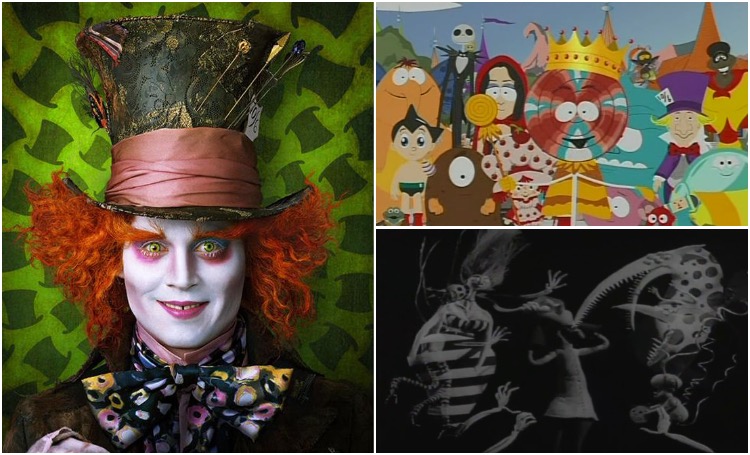
In the 2010 film Alice in Wonderland, Jack’s face can be found on the Mad Hatter’s bow tie. In James and the Giant Peach, Jack makes a cameo as Captain Jack. Upon discovering him, Centipede says “Uh, Skellington?” A silhouette of Jack is shown in The Princess and the Frog as one of the shadows Dr. Facilier summons. Other cameos can be seen in The Critic, Lenore, Robot Chicken, MAD, Tiny Toon Adventures, Panty andStocking, etc.(source)
12. Despite Tim Burton’s huge involvement with the creation, he was only present about 8 to 10 days of its production during its two-year production cycle.

On the direction of the film, Selick reflected, “It’s as though he [Burton] laid the egg, and I sat on it and hatched it. He wasn’t involved in a hands-on way, but his hand is in it. It was my job to make it look like ‘a Tim Burton film’, which is not so different from my own films.”
On Burton’s involvement, Selick claimed, “I don’t want to take away from Tim, but he was not in San Francisco when we made it. He came up five times over two years, and spent no more than eight or ten days in total.”(source)
13. Patrick Stewart was the original narrator of The Nightmare Before Christmas.

Patrick Stewart was brought onto the movie early on in its development when Burton’s original poem was supposed to play a bigger part in the narrative. But Tim Burton eventually cut Patrick Stewart’s narration. His voice can be found on the film’s official soundtrack. Here’s an opening monologue in his voice:
(source)
14. Disney fought to have Jack Skellington’s empty sockets filled with a pair of friendly eyes.
A common guideline in animation and puppet-creation is that eyes are crucial to having an audience connect with a character. Animators and puppet-makers always live by this rule. Hence, Disney fought for Jack to have his empty sockets filled with eyes. But Tim and Henry did not accept this as this would never capture the king of the Halloween town’s essence. They ultimately proved that their anti-hero didn’t need oculars to connect.(source)
15. There are hidden Mickey and Donald Duck references in particular scenes of the movie.
Mickey appears as a menacing toy, a flying stuffed animal with a sharp-toothed grin. Also, the girl that Mickey attacks as a menacing toy is wearing a Mickey print nightgown, while her brother’s pajamas are covered in Donald Duck faces.(source)
16. In the extended ending to the film, many years later, Santa Claus returns to Halloween Town to visit Jack, and finds that he has about four or five skeleton children.

The ending monologue in Patrick Stewart’s voice goes something like this:
17. The “Kidnap The Sandy Claws” music is heard in The Haunted Mansion Holiday ride at Disneyland California and Disneyland Tokyo as an instrumental version.

The Haunted Mansion Holiday is a guest favorite each year. Jack Skellington and co. take over the Haunted Mansion. More than 400 flickering candles and 100 jack-o’-lanterns create a ghostly glow on the façade of the Haunted Mansion. (1,2)
18. All the sets were built in miniature form, but they were lit as if they were full-size movie sets. Some sets required as many as 20-30 lights.

Even though the sets were miniature versions of actual sets, they were lit up like full-size movie sets by using smaller lighting equipment. Many of the scenes required as many as 20 to 30 different lights to create the dramatic effects. “What we’re trying to avoid is that looking like we are doing tricks. Coupled with that, trying to keep some style to it. The biggest challenge on the show I would say it’s keeping it consistent,” said Peter Kozachik, director of photography.
Eight camera crews worked on the filming. They pushed the barrier with a lot of motion-controlled cameras.(source)
19. Set designer Gregg Olsson built a quarter-scale mock-up of Halloween Town as a model for the real set. The set also had trap doors so animators could pop up and do the animation from beneath.
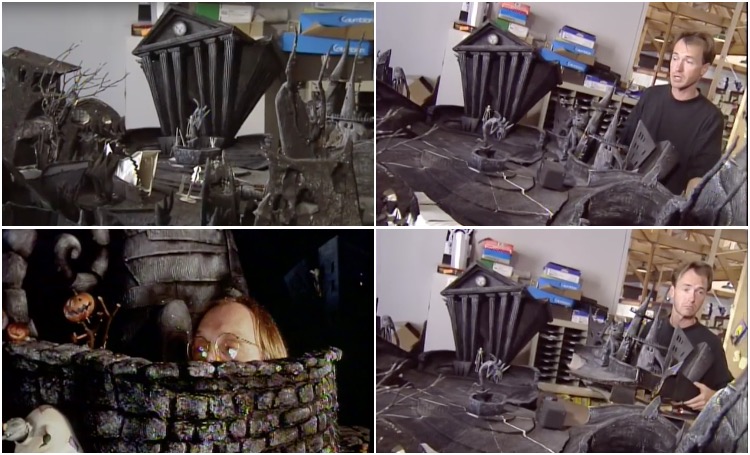
Gregg Olsson made a quarter-scale, mock-up model of the set from the drawings made by Tim Burton. He also worked on the camera angles to decide how much set is needed for each of the scenes.
He says, “Once the conceptual art is done, we need to somehow realize it in three dimension height, width, and depth.” The actual set was four times larger than the mock-up set, about 24 feet in length. Moreover, they had to break apart the set into pieces because, all together, it wouldn’t fit into their stages. “So we built into it some specific breaks so that a piece like this could come out,” says Olsson.
Also, animators had requested Olsson that they would prefer not to reach more than two to two and a half feet to reach the puppets. So, Olsson made the pieces of the set under two feet. For the parts that were more than two feet, Olsson provided trap doors so that animators could open up a set of stage, come up, do the animation, and then close the trapdoor.(source)
20. Two items were invented to facilitate the filming of the movie. One was a “light alarm” to warn animators if any of the stage lights failed, and the other was a system that enabled a puppeteer to seamlessly switch to a replacement puppet if one broke.
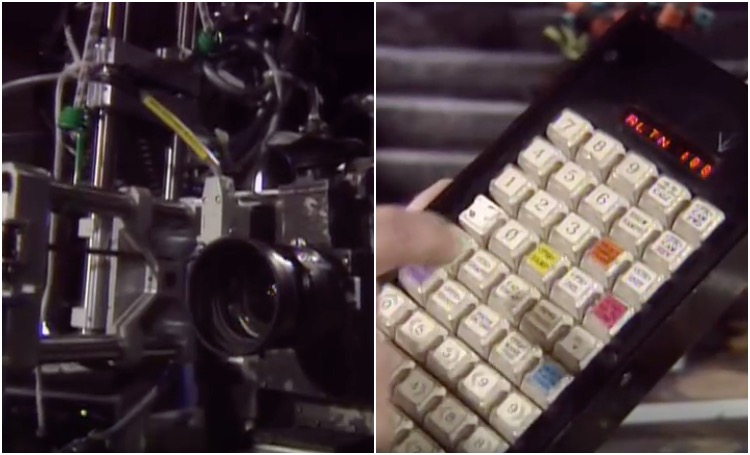
The Nightmare Before Christmas made several advances in claymation technology. The movie helped to streamline the process of producing claymation movies. The first major invention was a “light alarm” which warned the animators if one of the lights on the set went out. Before this, if the animators did not see that the light was out, they would have to start the shot over.
The second invention was a system for replacing puppets seamlessly into the shot if one broke. This also saved a lot of time during shooting.
The final advancement was the use of computer-controlled cameras. Before this movie, claymation was limited to a static camera. The use of computer-controlled cameras allowed the animators to create the smooth, sweeping and turning shots that one normally sees in traditional film.(source)











No comments:
Post a Comment